This
post was originally published on
this siteOriginally posted at: http://www.nerdfitness.com/
This post is from Rebel Chef, Noel.
Hello brave Rebel. Are you ready for an adventure in knife skills?
Imagine this – you’re in a kitchen-like dungeon. Torture devices hang from the walls – maces and hammers and sharp objects of varying size and cleanliness – pots big enough to boil 6 or 7 human heads. The room you’re in has a blue tile floor and several metal prep tables lined up neatly in the center of the room. A 10 burner cook top flanks the wall to your party’s right and several stacked ovens sit beside it.
It’s been a while since these kitchens have been used. They’re dirty and fly infested. They smell like mold and rotting meat. The sick, yellow bulbs of the fluorescent lights above you flicker. Most of them have burnt out, but a few remain on their last legs. You just want to get the heck out of there.
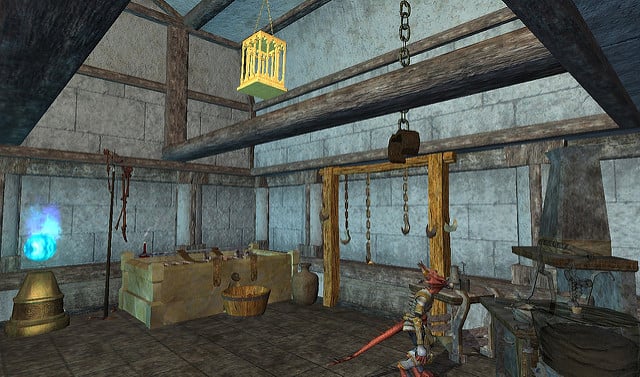
You start making your way to the swinging door on the opposite side of the room, careful not to step in the puddles of god-knows-what as you cross the kitchen dungeon.
You and your party make it about halfway across the room when the room begins to heat up. You hear a heavy, metallic *clink* as the door behind you locks shut. You’re trapped.
A red glow appears in the cracks of the swinging doorway, and a mechanistic CHEFBOT 2000 kicks his way through the doors armed with a flamethrower at his back, a massive meat tenderizer in his left hand and a sharp chef’s knife in his right. Smoke pours from atop his tall chef’s hat.
He appears to run on charcoal fire. The heat emanating from him is immense, and the smoke billowing from his hat is filling the room, sure to suffocate you and your friends if you don’t do something.
Let’s make sure you have kick-ass knife skills to defend yourself!
Knife Skills Quest: Begin

CHEF beckons you to the prep table in the center of the room.
You feel your skin begin to burn ever so slightly as you stand across the prep table from him. He challenges you to a knife skills duel: a battle of skill, precision, and accuracy. You reach inside your pack and pull out a wooden cutting board and place it on the table. It begins to crackle and burn slowly – you better get this over with fast.
Strapped to your leg are your weapons of choice – 2 sharp knives: a paring knife and a chef’s knife. CHEF snaps his fingers and a bowl of fresh vegetables and a prep sheet appear at your table. The prep sheet reads as follows:
- 1 Cucumber – sliced
- 1 Onion – diced
- 1 Bellpepper – Julienned
- 1 Clove Garlic – Minced
In order to defeat CHEF and unlock the doors out of the kitchen, you must successfully cut each of the things on the prep sheet with accuracy.
Have you practiced your knife skills lately? You damn well better hope so, pal.
Choose Your Weapon:
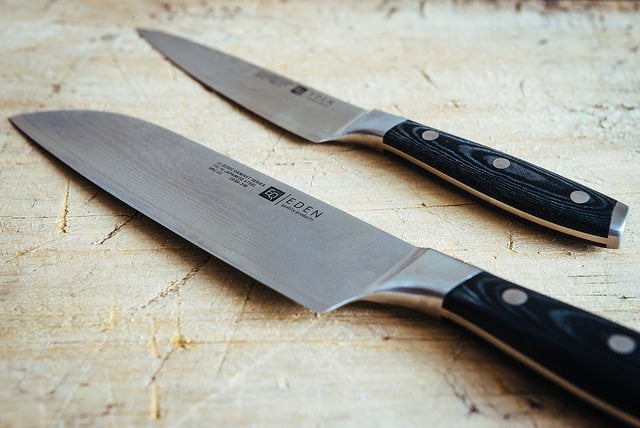
- Paring knife? A paring knife is a small knife (2.5-4in or 6-10cm long) for delicate work such as peeling, de-veining shrimp, removing seeds from peppers, and cutting garnishes.
- Chef’s Knife? This is your all-purpose kitchen knife. It has a broad, heavier blade that is pointed at the end. It’s significantly longer than the paring knife (6-12 in or 15-30cm).
[we should link both of these to amazon links]
For this exercise, you choose the all-purpose chef’s knife.
3, 2, 1, GO!
Slice – Take your cucumber and place it across the cutting board. To slice any fruit or vegetable, line your knife up perpendicular to the vegetable or fruit and cut down, creating uniform sized slices.
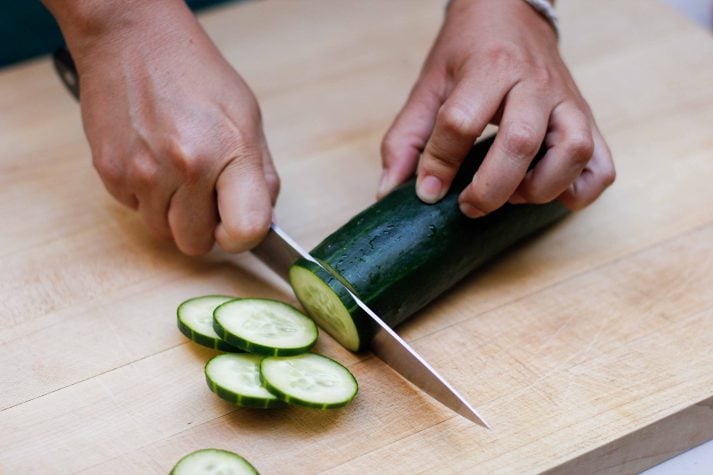
With a cylindrical item like a carrot, cucumber, or zucchini, this will create circles or medallions. Do your best to slice them into similar sizes – this way they cook at the same rate.
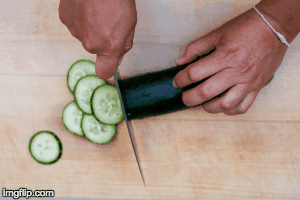
Dice – Take your onion and chop off the top. Peel the skin from it and throw the skin away.
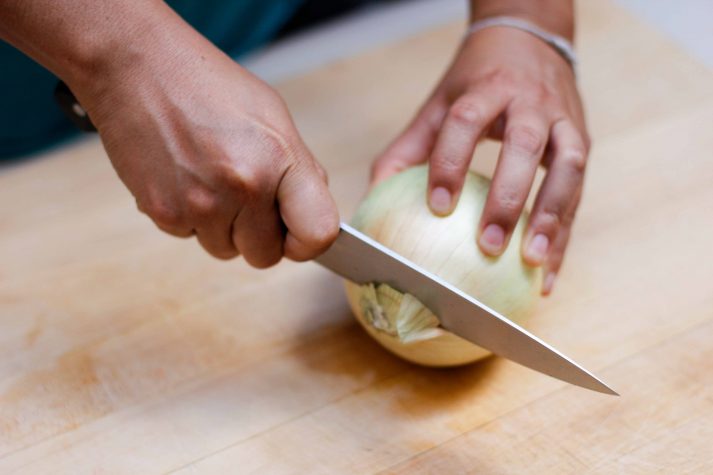
Place your onion so that the sliced part from the top is facing you. Carefully cut the onion in half down the middle.
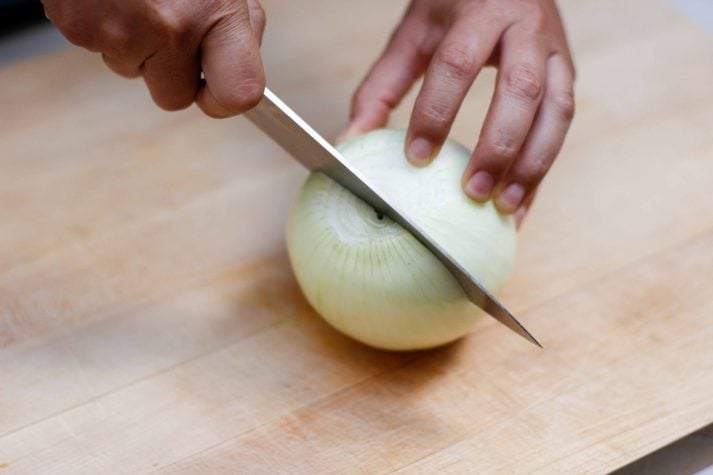
Now you have a flat surface to place on the cutting board. This will help you keep control of the onion and prevent it from rolling or slipping as you dice it. Safety (even with the CHEFBOT breathing down your neck)!
Now make several incisions along the top of the onion with the knife perpendicular to the top of the onion that you chopped off. Make sure when you’re making these slices that you’re cutting ALMOST all the way through to the end. The word almost is important here, people.
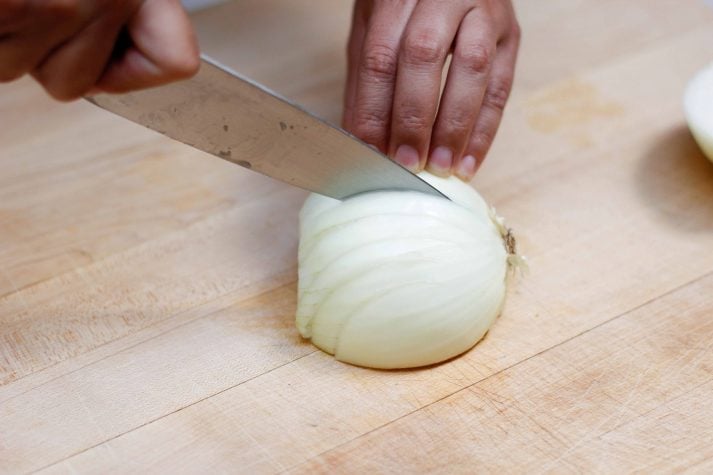
Keeping the onion whole at the butt-end will make dicing much easier and will give you something steady to grip when you make your next cuts. Now your onion is pre-diced.
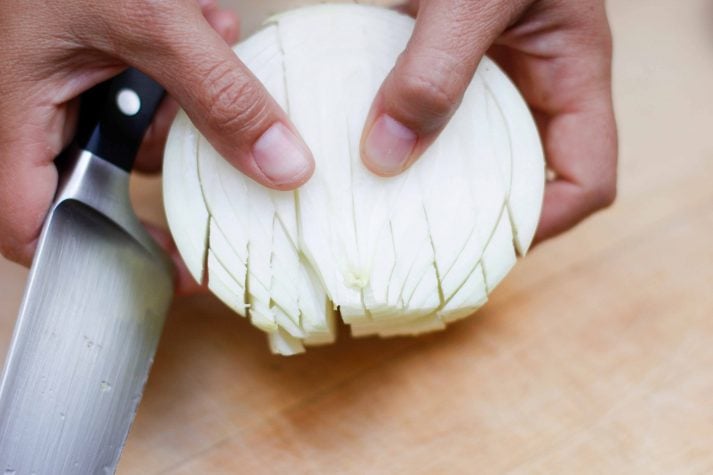
Place your onion on the cutting board (with the top of the onion that you already chopped off at the beginning) parallel with your knife. Turn the onion 90 degrees and make uniform slices starting at the end of the onion that you already cut off.
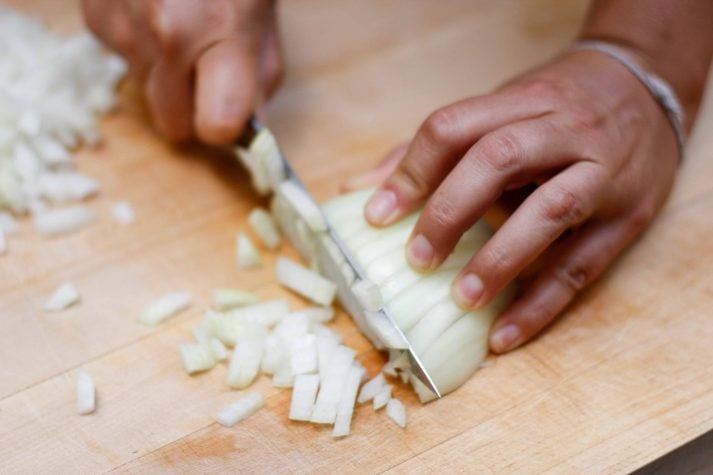
Slice as uniformly as possible. As you slice the onion, the bits you’re slicing off will be diced. Fancy!
Julienne – “Julienne” is a fancy word that means cut into long, thin strips. You can do this with bell peppers, carrots, potatoes, etc. First cut off the top and the bottom of the pepper. Remove the insides.
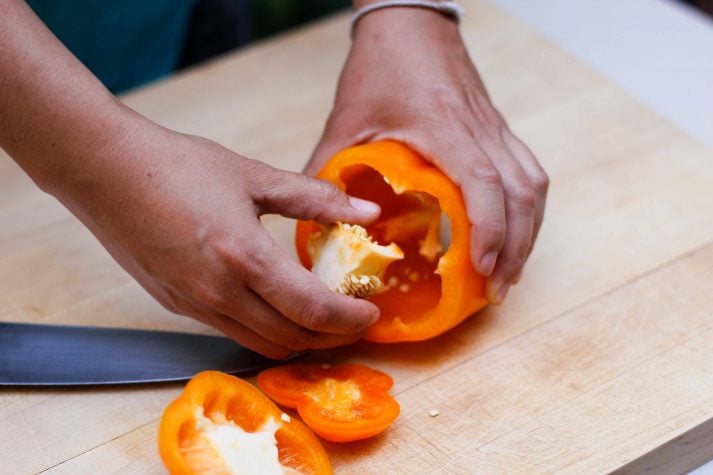
Then cut the pepper into rectangle-shaped quarters.
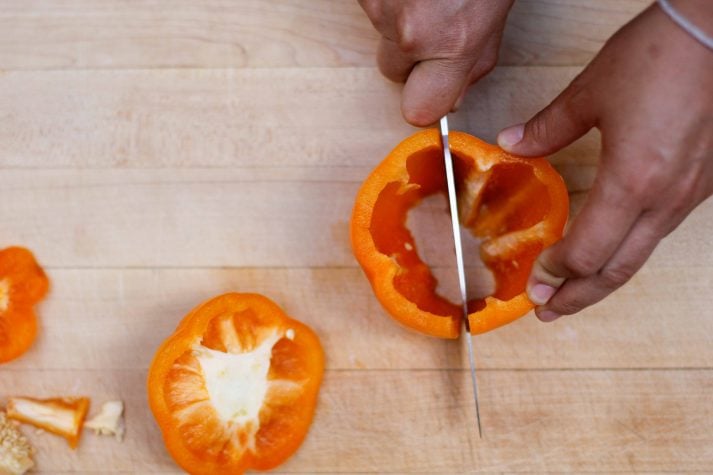
Now you’ll have smaller, relatively flat pieces of pepper to work with instead of a round pepper. This is safer and easier. Take each quarter of your pepper and make thin slices of it – again, you’ll want to do your best to make them uniform in size.
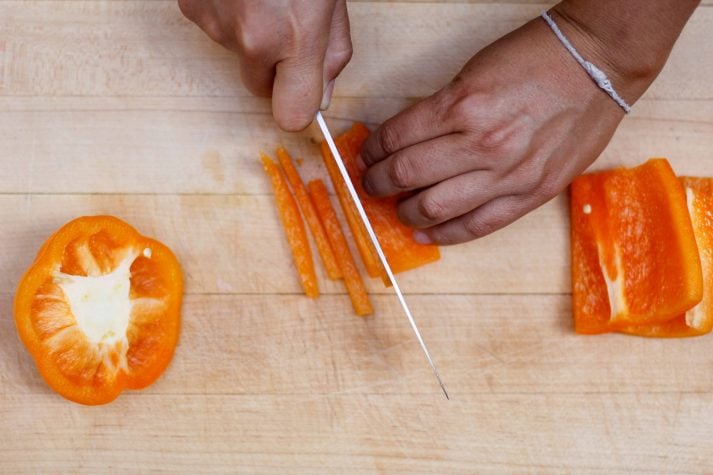
The more you practice, the easier this becomes.
Mince – “Mince” is a fancy word for “cut up super duper small.” It is done for more aromatic or flavorful ingredients like garlic or ginger. When mincing ginger, you’ll first you’ll want to pull your cloves from the bulb. The bulb is the big guy. The cloves are the small pods that make up the entire clove.
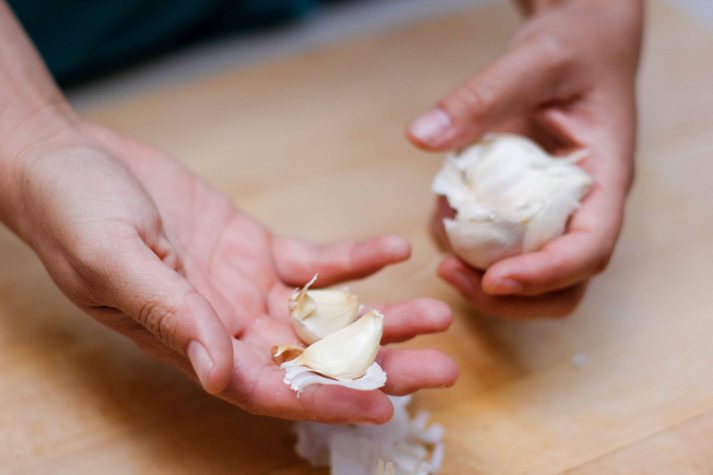
Next, you’ll want to peel them. To do this easily, take each clove separately and smash between the broad, flat side of your knife and the cutting board. Push them flat so that the skin cracks and begins to pull away from the flesh of the clove. You can now more easily pull the skin from the bulb.
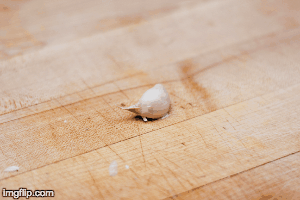
Now you’ll roughly chop the cloves (uniformity isn’t necessary here) until you’ve chopped them into tiny little pieces.
Usually I start at one end and work my way to the other – similar to slicing the cucumber.
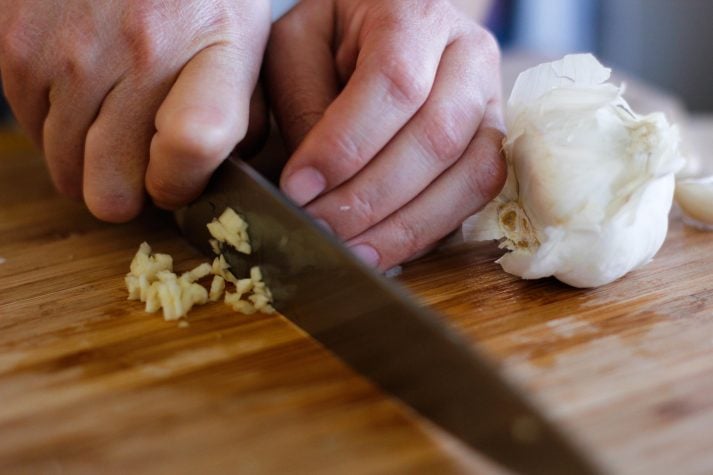
Then gather all those little garlic bits into a pile, place your hand over the top of the knife, and chop in a back and forth, rocking motion over the pieces of garlic, making them extra small.
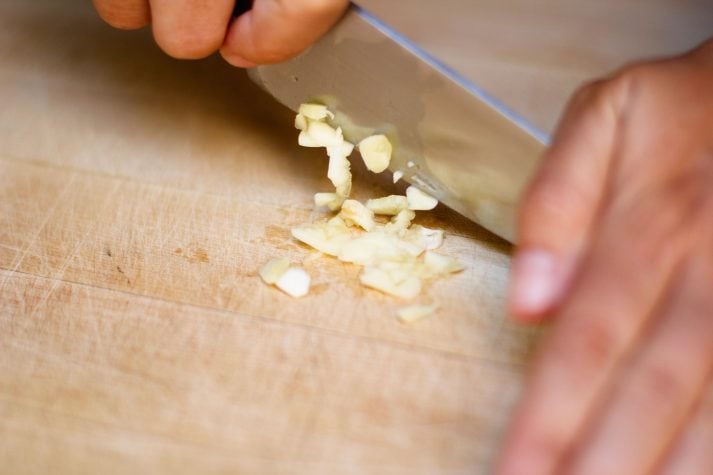
Victory!

You finish your cuts, sweat dripping from your brow. Behind you, the rest of your party quietly cheers you on, but they’re coughing from the charcoal smoke and ash in the air. You present your cutting board to CHEF. He stares at it quietly, his robot brain calculating the accuracy of your cuts. As the gears in his head turn, you cooly clean your blade and place it back in it’s holster at your side.
The light above the door changes from red to green as you hear the metal *clink* and the door is unlocked. CHEF steps aside. You have passed the knife skills challenge and are free to go. Covered in soot and coughing from ash, you and your party pass by the robotic CHEF ever so carefully. On to the next room of the dungeon!
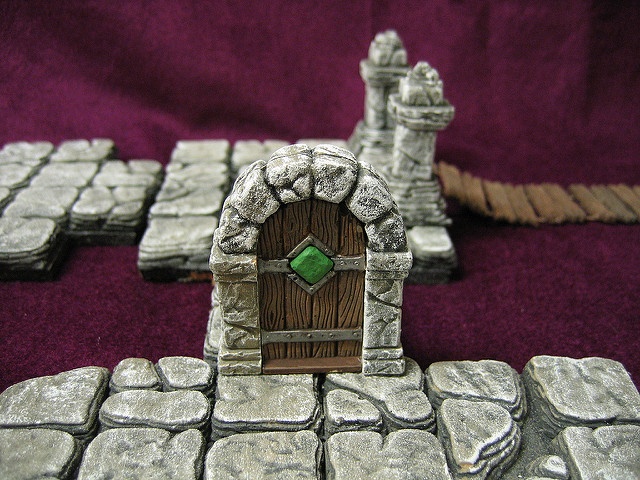
knowing is half the battle!
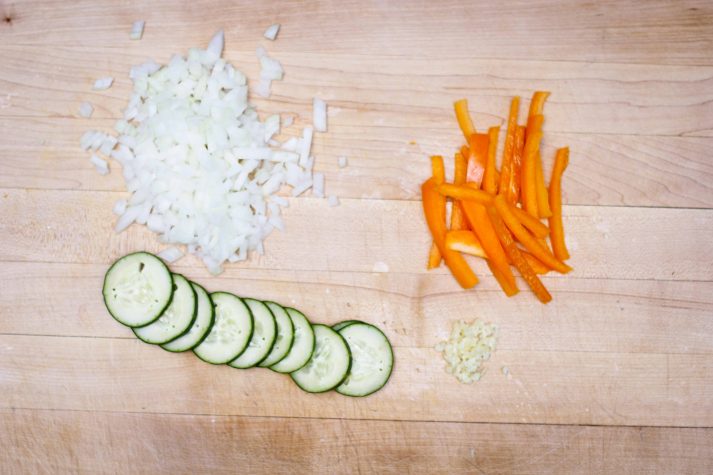
You now have four basic cuts that you can practice and use in your every-day cooking. Consider this a skill formally unlocked in your character.
Remember that as you practice your cuts, they don’t have to be 100% accurate – and they won’t be if you’re just starting out! That’s totally okay!
Unless you’re working in a professional kitchen, your techniques don’t have to be perfect, but knowing what a recipe means when it says “3 carrots, julienned” without having to look up what “julienned” means gets you one step closer to making that dish.
Eliminating even the tiniest steps between you and your food (and keeping you safe) is the goal here.
And let’s be honest, if cutting an onion this way feels like too much work at first, don’t do it that way! If your mother taught you something different and you prefer that, do it her way. There’s more than one way to slice and dice! Don’t let doing it the “right” way or feeling like you do something “wrong” stop you completely from getting in the kitchen.
Your slices and dices don’t have to be perfect, but now you’ll be able to confidently cut up some veggies when you’re helping out at Thanksgiving dinner. Maybe you’ll be able to show off some of your knife skills instead of being charged with setting the table and washing dishes!
- What other skills would you like to learn?
- Do you have other cuts that you would add to this list?
- How do you do things differently?
Let us know in the comments!
-Noel
###
Photos: Stijn Nieuwendijk: Kitchen Knives, ArshrAAm: Dungeon Kitchen 02, clry2: Bad Robot, Stijn Nieuwendijk: Eden Classic Damask, Jenn and Tony Bot: George Mendes Bot, tmib_seattle: Dungeon door










 For today’s edition of
For today’s edition of 





























 For now classes are 6pm and 640pm at 2840 Wildwood st in the Boise Cloggers studio.
Book your class NOW!
click this ==>
For now classes are 6pm and 640pm at 2840 Wildwood st in the Boise Cloggers studio.
Book your class NOW!
click this ==>








